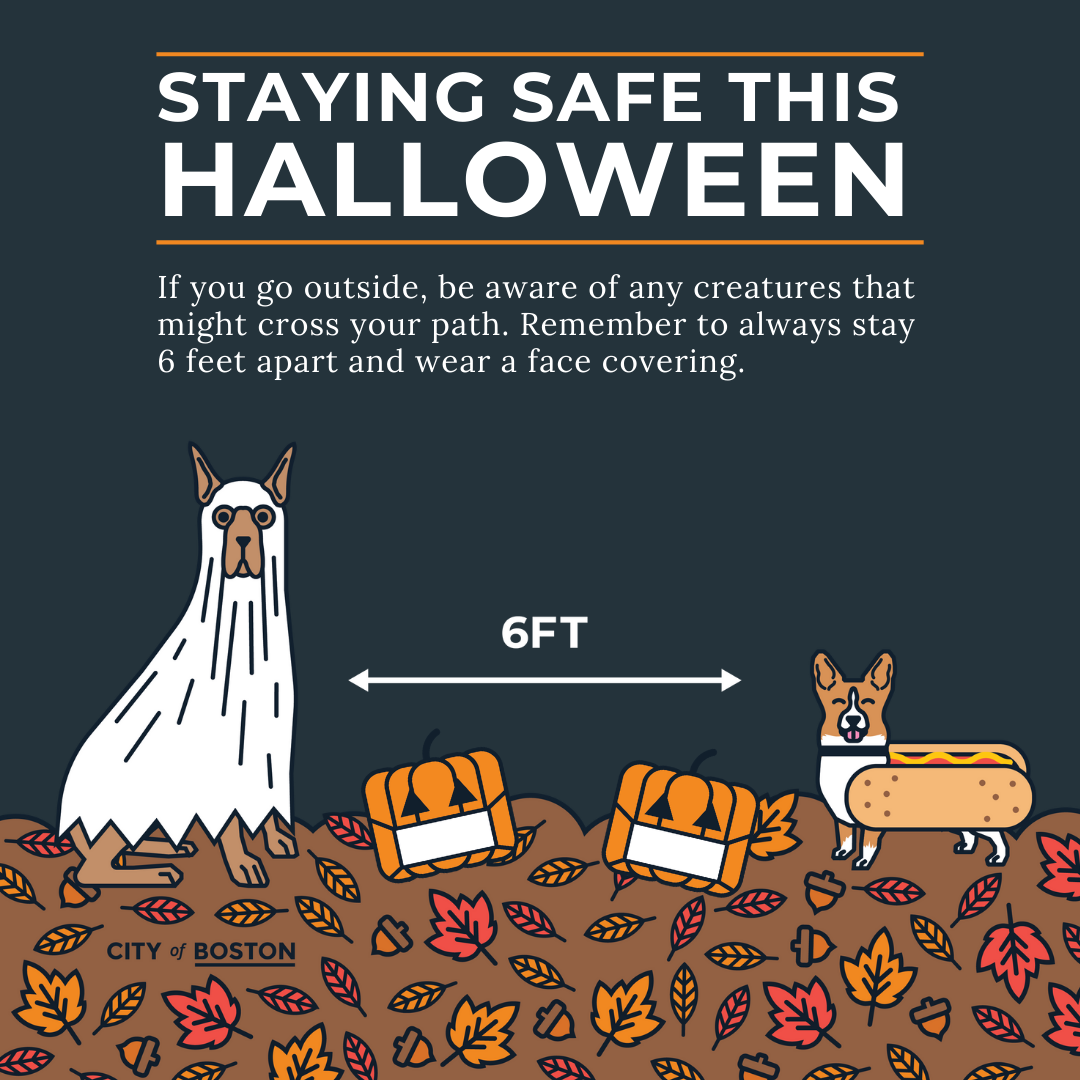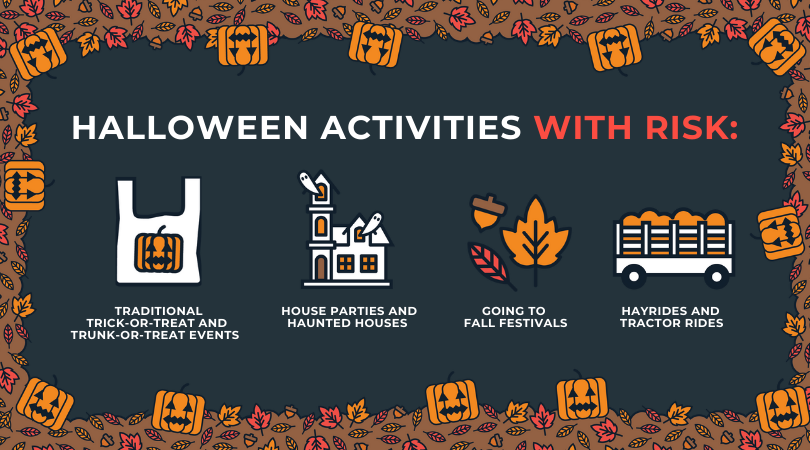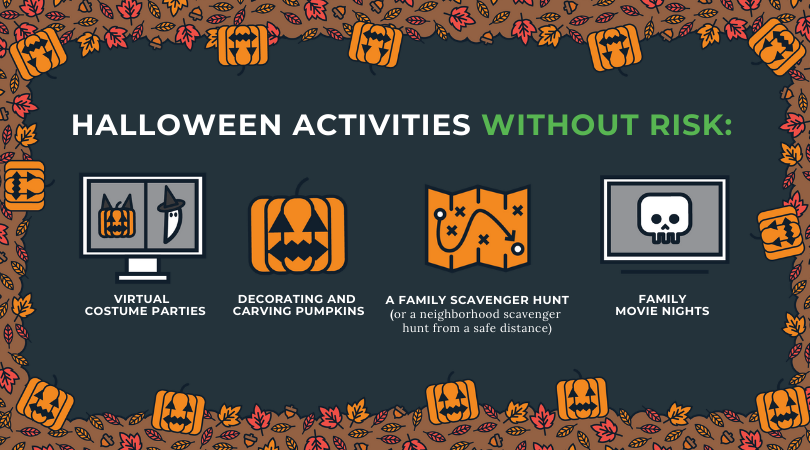Guidance for celebrating Halloween during COVID-19
Health officials have advised that many traditional activities raise the risk of spreading viruses.
Mayor Martin J. Walsh and the Boston Public Health Commission (BPHC) today released guidance on celebrating Halloween safely during the COVID-19 pandemic, urging residents who choose to celebrate Halloween to take extra precautions to keep themselves and others safe. Health officials have advised that many traditional activities, such as trick-or-treating, costume parties or crowded, confined spaces like haunted houses, raise the risk of spreading viruses.
Tips for staying safe
- Trick-or-treat only with immediate family members.
- Avoid direct contact with individuals passing out candy.
- Wash hands before handling treats.
- Wear a mask. A costume mask is not a substitute for a cloth mask.
- Stay at least 6 feet away from others who do not live with you.
- Bring hand sanitizer with you and use it after touching objects or other people.
- Avoid direct contact with trick-or-treaters.
- Wash hands before handling treats.
- Set up a station outdoors with individually wrapped goodie bags for trick-or-treaters.
- Wear a mask. A costume mask is not a substitute for a cloth mask.
- Stay at least 6 feet away from others who do not live with you.
BPHC health officials encourage families to find safer, alternative or virtual ways to have fun this season. The safest celebrations involve people from your household, are outdoors, allow for social distancing and other safety measures. In addition, BPHC is urging adults not to participate in gatherings or parties on Halloween.
Safe Halloween activities
- Carving or decorating pumpkins
- Decorating your home
- A virtual Halloween costume contest
- A family Halloween movie night
- A trick-or-treat scavenger hunt at home
- A Halloween neighborhood scavenger hunt from a distance
- Traditional trick-or-treating
- Trunk-or-treat events
- Haunted houses
- Hayrides or tractor rides
- Fall festivals
- Halloween parties or celebrations
Any Halloween activities should comply with COVID-19 safety guidelines and participants should limit the risk of exposure to COVID-19 by following these safety tips:
- Wear a face covering. A costume mask is not a substitute for a cloth or paper mask. Do not wear a costume mask over a protective cloth mask because it could make it hard to breathe. Instead, consider using a Halloween-themed cloth mask.
- Stay at least six feet apart.
- Avoid large parties or gatherings.
- Avoid crowded areas.
- Wash your hands or use an alcohol-based hand sanitizer, especially before eating candy.
- Avoid touching your face.
If any Halloween activities may lead to screaming, make sure everyone is wearing a face covering and staying more than six feet apart. The greater the distance, the lower the risk of spreading a respiratory virus.
If residents may have COVID-19 or may have been exposed to someone with COVID-19, stay home and do not participate in in-person Halloween festivities. Residents who may have COVID-19, who are not feeling well, or have been exposed to the virus should not give out candy to trick-or-treaters.
As a reminder, any Halloween activities are subject to the current gathering size limits set by the City of Boston and the Commonwealth of Massachusetts.
Read more on the Halloween activity guidance released by the Centers for Disease Control and Prevention.
Boston Parks activities
Mayor's Pumpkin Carving Contest
Share photos of your jack-o'-lanterns with the Boston Parks Department and we will share our favorites on social media. Enter the contest for your chance to win a prize!
Feed the Monster
Join us for some spooky composting events. Feed the Monster your pumpkins and know that your jack-o'-lanterns are going to serve as soil in a Boston community garden.





